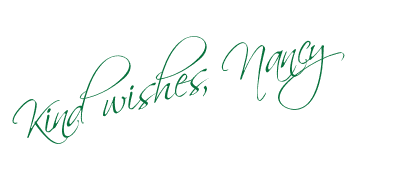Originally known as the Ketton Ox when first exhibited in 1799, the Durham Ox was famed for his massive size of nearly 3,800 lbs.
Bred by Charles Colling of Ketton Hall, Brafferton near Darlington in NE England the Durham the Ox was born in 1796 and sold in 1801 to John Day who renamed it the Durham Ox.
The Ox was transported round England in a specially built carriage pulled by 4 horses and displayed at agricultural shows and the like, with Day charging admission to see the beast. Charles Colling and his brother Robert of nearby Barmpton developed the shorthorn breed of cattle using the selective breeding techiniques pioneered by Robert Bakewell. The Ox was an early example of that breed, but after dislocating its hip in 1807 it was slaughtered. It was painted by John Boultbee in 1802 with John Day at its head. This painting was engraved and over 2000 of the engravings were sold. This became the source print for the main Durham Ox view (depicted on transferware), although the other source prints have not been identified.
Bred by Charles Colling of Ketton Hall, Brafferton near Darlington in NE England the Durham the Ox was born in 1796 and sold in 1801 to John Day who renamed it the Durham Ox.
The Ox was transported round England in a specially built carriage pulled by 4 horses and displayed at agricultural shows and the like, with Day charging admission to see the beast. Charles Colling and his brother Robert of nearby Barmpton developed the shorthorn breed of cattle using the selective breeding techiniques pioneered by Robert Bakewell. The Ox was an early example of that breed, but after dislocating its hip in 1807 it was slaughtered. It was painted by John Boultbee in 1802 with John Day at its head. This painting was engraved and over 2000 of the engravings were sold. This became the source print for the main Durham Ox view (depicted on transferware), although the other source prints have not been identified.
"Durham Ox With John Day" by an unknown maker is found on a Circa 1820, 21 inch by 17 inch platter. It was copied from an engraving by T. Whessell after a painting by T. Boultbec. The Durham Ox is found only on this platter and the 10" plate and soup plate.
The rest of the series portrays rural scenes with cows and cowmen comprising 9 scenes total. The pieces are all unmarked.
10" plate
Unusual trefoil dish and quatrefoil dish from the series.
Pickle Dish
The Durham Ox pieces all command steep prices ranging from about $700-$7000. So yes, it's safe to assume that I don't have any of them in my collection. =)

Joining: Blue Monday
Show it Off Monday
BNOTP
BPIfi6s(F!~~60_57.JPG)





Hi Nancy, oh my gosh you know I love the 2 small plates. The platter is gorgous!! Safe to say none of it will be in my collection either..thanks for the information, love reading about the history behind plates and platters. hugs ~lynne~
ReplyDeleteI just love reading your blog! The way you share your knowledge are so interesting. My family is teasing me for my hugh interest in english pottery, but you are way beyond me *S* . Thanks for giving me the pleasure of reading your blog and enjoying your pictures! - best regards Liv
ReplyDeleteWhat a great informative and interesting blue Monday post.
ReplyDeleteI like the history behind the blue Durham Ox. I haven't any either.
ReplyDeleteHappy Blue Monday,Nancy! Be sure to check out my Kindle Fire giveaway.
I find out so much when I visit here. Guess I won't have any of those pieces at those prices, either- xo Diana
ReplyDeleteAs I was reading, I thought, Oh, I like those, I'll have to watch for them, then I saw how much they cost, and thought, Oh well! (: I love the country look about them though, thanks for sharing--
ReplyDeleteWhat a gorgeous little pickle dish x
ReplyDeleteThank you for sharing these stunning pieces! I couldn't help but think about reading John Bunyon in Jr.High School, starring Babe the Blue Ox!
ReplyDeleteNancy
I love the leaf dish!
ReplyDeleteVisiting from Blue Monday. Here is my BLUE post. Have a nice week ahead.
Oh, so expensive. I like that pickle dish..
ReplyDeleteVisiting for Blue Monday- hope you can stop by:)
http://dsahmblogs.com/2012/06/summer-babies-are-here.html
The story about the pattern is really interesting. Isn't it a shame that the pieces are so expensive? Oh well, at least since I don't have any pieces,I won't have to worry about breaking them..:)
ReplyDeleteFascinating history...gorgeous platter...is it part of your collection?
ReplyDeleteNo, it's way out of my price range! =)
Deletebeautiful but pricey. Love the history.My favorite is the pickle dish. Such a pretty blue.
ReplyDeleteNancy, you've given us another very informative and interesting post. I always learn something new from you. Loved reading about the history of the Durham Ox and seeing these gorgeous examples At those prices, I don't there are many in private collections. ;-)
ReplyDeleteBeautiful english pottery.
ReplyDeleteI greet the Polish Viola.
Yes beautiful English pottery.
ReplyDeleteI have a question for you. Maybe you can help.
I just picked up a wedgwood plate , blue and white. The design on the front
is "The Black Bull" Haworth. Can you tell me anything about this? Thanks
What a beautiful color! And your entry is so informative, as always, Nancy. I love to learn about the different patterns and their history!
ReplyDeletei have a pitcher and bowl which stands quite tall it has ox on it, 2 ladies and one is actually sat on an ox they are under a big tree and there are a few sheep too, also on the bowl there is a small horse scene and a maid milking a cow, they are both unmarked i would like to send some photos if i could please thankyou kind regards lisa
ReplyDelete